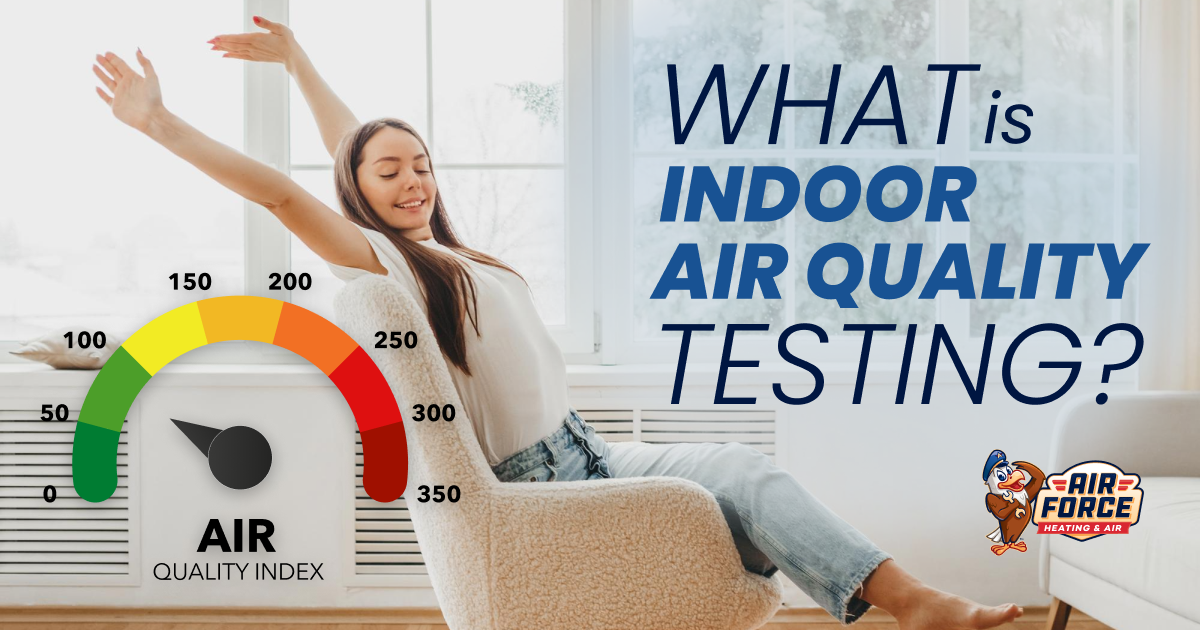As people spend more and more time indoors, indoor air quality (IAQ) has become a growing concern among many households. Indoor air quality is defined as the measure of pollutants present in the air within and around buildings. It directly impacts the health and well-being of everyone inside.
In this blog, we will shed light on the significance of indoor air quality testing and explore its various aspects, from understanding IAQ to interpreting test results and implementing changes for a healthier living space.
Why is Indoor Air Quality Testing Important?
Indoor air quality is affected by various factors, with common pollutants from sources like household products, building materials, and outdoor contaminants making their way inside.
Common Air Pollutants Include the Following
- Particulate matter
- Volatile organic compounds
- Mold and mildew
- Radon
- Tobacco smoke
- Carbon monoxide
- Formaldehyde
- Pesticides
- Asbestos
Health Issues Associated With Poor IAQ
- Respiratory issues such as asthma, bronchitis, coughing, and wheezing
- Allergic reactions
- Respiratory infections
- Cardiovascular issues
- Neurological effects
- Eyes, nose, and throat
- Long-term health risks, such as cancer development, when exposed to pollutants like radon or formaldehyde.
- Developmental issues in children
- Compromised immune system
Who Does Indoor Air Quality Testing?
Indoor air quality testing can be conducted by various professionals, depending on the scope and complexity of the testing required. Here are some of the most common entities or professionals who would perform an indoor air quality test inside a building or a home:
- Certified Industrial Hygienist (CIH)
- Certified Indoor Environmental Consultant (CIEC)
- A company specializing in air quality testing
- Occupational and environmental health specialists
- HVAC contractors who specialize in indoor air quality testing
- Environmental Protection Agency officials
- Home inspectors
- Mold inspection professionals
- Homeowners are using DIY testing kits
While indoor air quality tests exist in a DIY format, it is crucial to understand that no DIY kit is comparable to a professionally conducted air quality test. Be sure to contact a professional in your area to get the most accurate assessment of your indoor air quality, along with the interpretation of those results and personalized recommendations for your home.
Indoor Air Quality Testing Methods
There are a variety of ways that indoor air quality is tested. The choice of testing methods depends on the specific contaminants of concern and the goals of the assessment.
Common Types of Air Quality Testing
- Air sampling uses active sampling through a collection device, such as a filter or sorbet tube, or passive sampling, using devices that absorb contaminants over a specific period.
- Surface testing for mold or allergens.
- Gas sampling for radon or carbon monoxide contaminants.
- Volatile organic compounds (VOCs) testing using air sampling or real-time monitoring.
- Dust sampling
- HVAC system assessment of airflow quality, duct inspection, and cleaning, and assessment of the system’s ventilation.
When you contact Air Force for your Indoor Air Quality testing needs, you will receive a thorough assessment of all your concerns. The right type of testing will be selected and tailored based on the needs of your household.
Making Changes for Better Indoor Air Quality
After testing your indoor air quality, the HVAC contractor or indoor air quality specialist will provide customized recommendations for improving it in the home. Below are some common recommendations that are typically provided to homeowners.
Ventilation Improvements
Make sure that there is always plenty of fresh air by periodically opening the doors and windows. Use exhaust fans in the kitchen while cooking and then delete the house after using cleaning products.
Regular Maintenance and Cleaning
Take the time to regularly dust and mop to prevent the accumulation of dust and dirt throughout the house.
Clean HVAC Systems
Invest in regular HVAC maintenance inspections that include a thorough cleaning of the entire system. This will ensure the air flowing through your home is clean, properly humidified, and ventilated. It will also ensure that the HVAC unit is free of extra moisture, mold, and mildew.
Install Air Purifiers
Invest in high-quality air purifiers that will help keep the air clean of any pollutants, germs, and chemicals.
Store Chemicals Properly
Store all chemical cleaning products and pesticides away from living spaces and keep them in well-ventilated areas.
Periodic IAQ Testing
Schedule periodic IAQ testing to ensure that the indoor air quality scores remain at optimal levels.
Limit Smoking Indoors
Tobacco smoke also contributes to poor indoor air quality and can lead to unwanted health problems. Limit the use of cigarettes as much as possible inside the house.
Quality Air Solutions for You
Has it been a while since your indoor air has been assessed? Contact us today for a top-notch indoor air quality test and to learn about the ways you can improve the atmosphere in your home.

